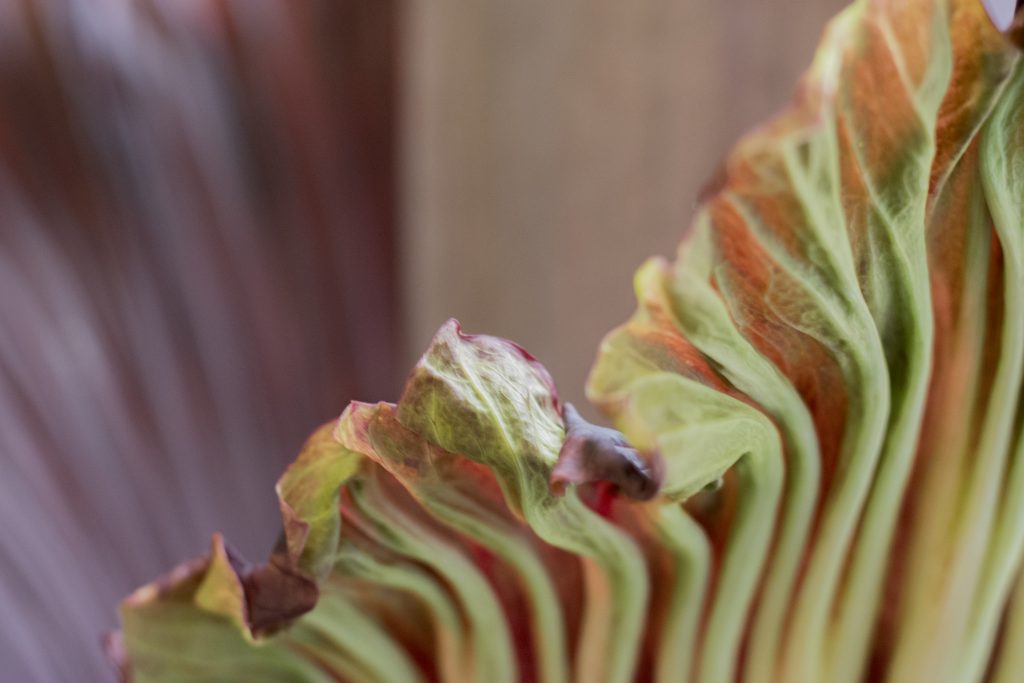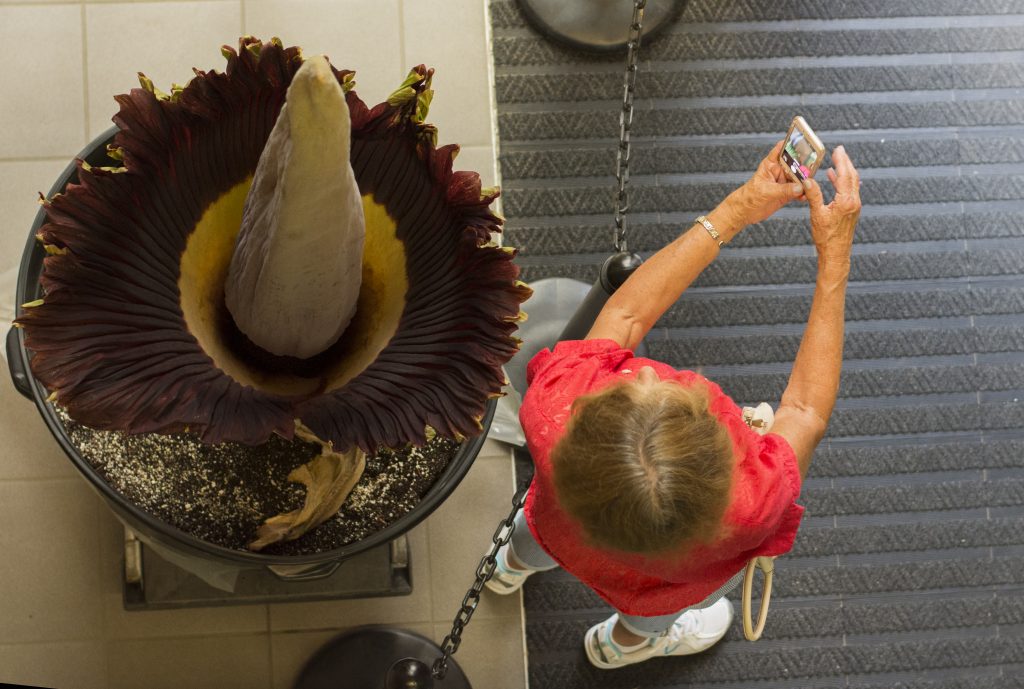Over the weekend, a smell most accurately described as rotting flesh seeped into the atrium of the Thad Cochran Research Center. The smell came from a six-foot-tall plant that bloomed Saturday morning.
The Amorphophallus titanum (titan arum), known as the corpse flower due its unique scent, is one of the largest unbranched flowering plants in the world. This plant only blooms once every 7-10 years, and while bloomed, it produces a foul odor in order to attract pollinators. Native to Sumatra and Indonesia, some of these plants can grow up to ten feet tall.

The Thad Cochran Research Center displays their blooming corpse flower. The Titan arum blooms only once every 7-10 years and smells like a rotting corpse. Photo by Christian Johnson
The size and smell of the corpse flower attracted many people to the Thad Cochran Research center over the weekend, where they were able to learn about the plant from research botanist Lal Jayaratna.
“I think the Oxford people are very lucky to see this flower because this is the only place around where they can see it,” Jayaratna said.
The Maynard W. Quimby Medicinal Plant Garden started growing corpse flowers from seeds about a decade ago.
“At the Quimby garden, we do have a collection of medicinal plants from different parts of the world and we are part of a seed exchange program,” said Ikhlas Khan, director of the National Center for Natural Product Research.
The first corpse plant bloomed in the Quimby garden in May 2014, followed closely by a second one blooming that June. This corpse flower is only the third one to bloom on campus.

The Thad Cochran Research Center displays their blooming corpse flower. The Titan arum blooms only once every 7-10 years and smells like a rotting corpse. Photo by Christian Johnson
Jayaratna said he tried to fertilize the titan arum that bloomed in June with pollen from the one that bloomed in May, but the fertilization was unsuccessful. Jayaratna plans to try to self-pollinate the titan arum that bloomed over the weekend.
“The flower blooms to get pollen from another plant, so it has a special mechanism to avoid self-pollination,” he said.
He said the corpse flower is not one big flower, but a plant that has a cluster of small flowers at the base of the cone-shaped torch of the plant. In order to avoid self-pollination, the titan arum has a ring of male and female flowers. These bands of flowers mature at different times so that the pollen from the male flowers do not usually fertilize the female flowers.
Jayaranta said he hopes to to get around this protection mechanism to have the first successful fertilization of an Amorphophallus titanum in Oxford.

The Thad Cochran Research Center displays their blooming corpse flower. The Titan arum blooms only once every 7-10 years and smells like a rotting corpse. Photo by Christian Johnson






